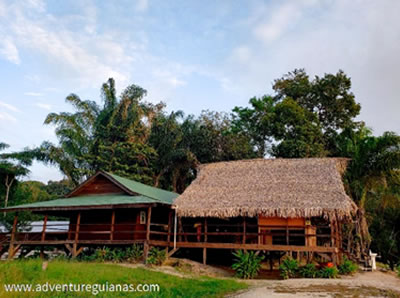Backpackers Adventure
$2200 per person
“Backpackers Adventure” caters for  low budget travelers with a flexible schedule, using shared transportation, less expensive lodges, to experience Guyana’s tropical wilderness, wetlands and savannahs. It combines, the overland trek to the majestic Kaieteur Falls, with the Iwokrama Rainforest Reserve and Rupununi Savannahs, to complete Guyana’s Popular Tourist Destinations.
low budget travelers with a flexible schedule, using shared transportation, less expensive lodges, to experience Guyana’s tropical wilderness, wetlands and savannahs. It combines, the overland trek to the majestic Kaieteur Falls, with the Iwokrama Rainforest Reserve and Rupununi Savannahs, to complete Guyana’s Popular Tourist Destinations.
We can customize to extend the tour and/or continue onwards to Brazil or return to Georgetown and continue to Suriname and French Guiana
Download and print -:- Guyana on a Budget – Backpackers Adventure Itinerary.
Minimum Group Size -:- 2 Persons.
Included:
-
- All entrance fees for listed tours,
- Tour guide services,
- Transportation,
- Accommodation,
- Meals & light refreshments (except in Georgetown and whilst traveling),
- Hammock and mosquito net.
Excluded:
-
- Hard liquor,
- Tips,
- Personal porter and meals in Georgetown and whilst traveling to traveling,
- Visa or airport taxes.
Day 1: Georgetown –Mahdia
An early start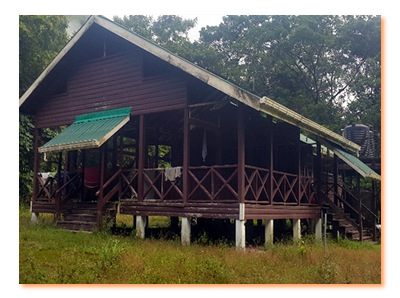 to probably the most arduous day, departing Georgetown at 06.00 hrs by vehicle (shared transportation) along the Linden Soesdyke Highway onto the Linden to Brazil Dirt Road will arrive at Peter & Ruth Restaurant, Mabura. After refreshing yourself, we continue to the Essequibo River, Guyana’s largest and South America’s fourth. Crossing is by barge and continue to the Mining Township of Mahdia, where dreams sometimes become a reality for some of the gold and diamond seekers, locally called “Porknockers”. Here, we meet our local guides who will show you to your hammock accommodation in Mahdia (D).
to probably the most arduous day, departing Georgetown at 06.00 hrs by vehicle (shared transportation) along the Linden Soesdyke Highway onto the Linden to Brazil Dirt Road will arrive at Peter & Ruth Restaurant, Mabura. After refreshing yourself, we continue to the Essequibo River, Guyana’s largest and South America’s fourth. Crossing is by barge and continue to the Mining Township of Mahdia, where dreams sometimes become a reality for some of the gold and diamond seekers, locally called “Porknockers”. Here, we meet our local guides who will show you to your hammock accommodation in Mahdia (D).
Day 2: Mahdia -Amatuk Falls-Waratuk-Tukeit
After 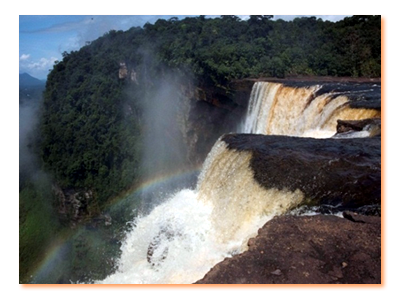 breakfast continue by 4*4 vehicle for the 5 miles (7.5 kms) of rough terrain onto the Potaro River (Pamela Landing), After loading our stuff into the boat we set off along the wining Potaro River, where most of its water would have cascaded over Kaieteur Falls, making its way into the Mighty Essequib, onto Amatuk or Amatuk Falls, a small Gold & Diamond settlement. A short trek around the falls, takes us above Amatuk for continuation by boat and trekking (depending on the weather, swollen interlocking rivers etc), first to Waratuk Falls, the Lower Boundary of Kaieteur National Park. Here the boat is portaged above Waratuk and boating/trekking continues to Tukeit, the foot of Kaieteur Mountain, where the Kaieteur Gorge empties into the Potaro, and where the Queens Rest House was once located, now replaced by a spanking new facility. A refreshing swim/bathe, preferably in the River and dinner will send you into bed for a comfortable sleep in the Tukeit Guest House, utilizing hammocks or limited beds (BLD).
breakfast continue by 4*4 vehicle for the 5 miles (7.5 kms) of rough terrain onto the Potaro River (Pamela Landing), After loading our stuff into the boat we set off along the wining Potaro River, where most of its water would have cascaded over Kaieteur Falls, making its way into the Mighty Essequib, onto Amatuk or Amatuk Falls, a small Gold & Diamond settlement. A short trek around the falls, takes us above Amatuk for continuation by boat and trekking (depending on the weather, swollen interlocking rivers etc), first to Waratuk Falls, the Lower Boundary of Kaieteur National Park. Here the boat is portaged above Waratuk and boating/trekking continues to Tukeit, the foot of Kaieteur Mountain, where the Kaieteur Gorge empties into the Potaro, and where the Queens Rest House was once located, now replaced by a spanking new facility. A refreshing swim/bathe, preferably in the River and dinner will send you into bed for a comfortable sleep in the Tukeit Guest House, utilizing hammocks or limited beds (BLD).
Day 3: Tukeit-Kaieteur
After
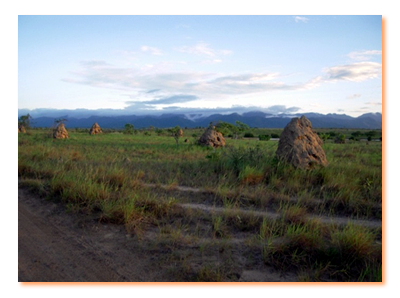 breakfast, the most challenging part of the trip awaits you- “the Oh my God Hike” to Kaieteur Plateau some 1,800 ft (560 meters) above sea level, part of a wider Kaieteur National Park. The Hike, for the most part, is a gradual ascend, and other, a step and tedious climb, which can take between 2-5 hours depending on your fitness level, before being rewarded with the shear awe of the majestic Kaieteur Falls (World’s Highest Single Drop Water Falls)- Kaieteur is nearly five times the height of Niagara Falls. Here we hope to find White-chinned and White-tipped Swifts swirling over the gorge, and the astonishingly colorful Guianan Cock-of-the-Rock; the Kaieteur Guest House offers either hammocks or limited rooms with beds. (BLD).
breakfast, the most challenging part of the trip awaits you- “the Oh my God Hike” to Kaieteur Plateau some 1,800 ft (560 meters) above sea level, part of a wider Kaieteur National Park. The Hike, for the most part, is a gradual ascend, and other, a step and tedious climb, which can take between 2-5 hours depending on your fitness level, before being rewarded with the shear awe of the majestic Kaieteur Falls (World’s Highest Single Drop Water Falls)- Kaieteur is nearly five times the height of Niagara Falls. Here we hope to find White-chinned and White-tipped Swifts swirling over the gorge, and the astonishingly colorful Guianan Cock-of-the-Rock; the Kaieteur Guest House offers either hammocks or limited rooms with beds. (BLD).
Day 4: Return to Mahdia & Overnight
Day 5: Kurupukari, Essequibo River & Piraiba Lodge
This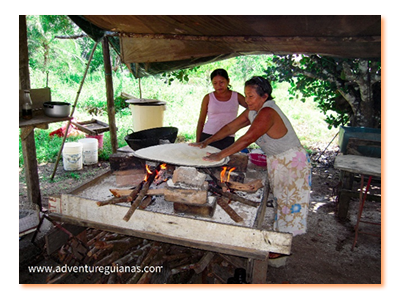 morning you will take a bus to Mahbura, where our vehicle will take you to Kurupukari, continue by boat on the Essequibo R. thru the Iwokrama Rainforest Reserve deep into the jungles of Guyana. The boat ride ends at Adventure Guianas Piraiba (Lau Lau) Lodge, which is situated on the Eastern Bank of the Essequibo River, deep into the Jungles of Guyana. This four-bedroom facility offer guests a mixture of comfort and rusticity, surrounded by pristine rainforest, full of wildlife. Named after the largest freshwater cat fish specie of South America, the Piraiba or Lau Lau, because of its proximity to their habitats, the Lodge is constructed primarily from one of our finest and most durable of wood specie-the Green Heart. This evening we would do a bit of fishing whilst observing the several species of macaws, toucans etc returning to their habitats to sleep. After dark, we’ll set out on the river, in hopes of finding the Black Caiman or another of its four species, and listen for night birds such as Spectacled Owl, White-winged Potoo, Rufous Potoo, Long-tailed Potoo, Zigzag Heron or Blackish Night Jar and one or another of the four species of caiman -Overnight Piraiba Lodge (BLD).
morning you will take a bus to Mahbura, where our vehicle will take you to Kurupukari, continue by boat on the Essequibo R. thru the Iwokrama Rainforest Reserve deep into the jungles of Guyana. The boat ride ends at Adventure Guianas Piraiba (Lau Lau) Lodge, which is situated on the Eastern Bank of the Essequibo River, deep into the Jungles of Guyana. This four-bedroom facility offer guests a mixture of comfort and rusticity, surrounded by pristine rainforest, full of wildlife. Named after the largest freshwater cat fish specie of South America, the Piraiba or Lau Lau, because of its proximity to their habitats, the Lodge is constructed primarily from one of our finest and most durable of wood specie-the Green Heart. This evening we would do a bit of fishing whilst observing the several species of macaws, toucans etc returning to their habitats to sleep. After dark, we’ll set out on the river, in hopes of finding the Black Caiman or another of its four species, and listen for night birds such as Spectacled Owl, White-winged Potoo, Rufous Potoo, Long-tailed Potoo, Zigzag Heron or Blackish Night Jar and one or another of the four species of caiman -Overnight Piraiba Lodge (BLD).
Day 6: Piraiba Lodge
This morning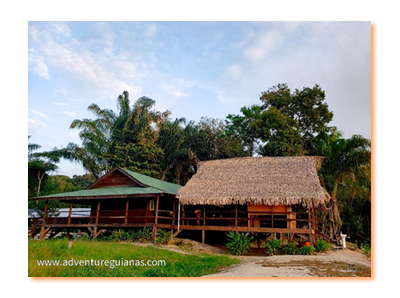 we would set out on a boat ride further up the mighty Essequibo River, amidst lots of birdlife, hoping to see the Capybara, Giant Otter, Tapir, Primates (common are the Red Howler, Spider, Capuchins & Squirrel Monkeys) and even the elusive Jaguar, maybe feasting on a Giant River Turtle or Arapaima or just swimming from one bank to the other. After lunch we will take a guided walk through one of our nature trails, hoping to see the Gray Brocket Deer and other wildlife. Before dark observe the Toucans, Ospreys, Muscovy Ducks, Anhinga’s etc making their way to their respective resting spots-Overnight Piraiba Lodge (BLD).
we would set out on a boat ride further up the mighty Essequibo River, amidst lots of birdlife, hoping to see the Capybara, Giant Otter, Tapir, Primates (common are the Red Howler, Spider, Capuchins & Squirrel Monkeys) and even the elusive Jaguar, maybe feasting on a Giant River Turtle or Arapaima or just swimming from one bank to the other. After lunch we will take a guided walk through one of our nature trails, hoping to see the Gray Brocket Deer and other wildlife. Before dark observe the Toucans, Ospreys, Muscovy Ducks, Anhinga’s etc making their way to their respective resting spots-Overnight Piraiba Lodge (BLD).
Day 7: Lethem-Guyana/Brazil Frontier
This morning we would make an early start to get the bus to the Guyana/Brazil Border Township of Lethem, located in the Upper Takutu-Upper Essequibo Region of Guyana. Lethem is considered the capital of Region 9 and is a hub linking many of the surrounding Indigenous Villages with Georgetown and Boa Vista, the nearest town in Brazil. The recently commissioned Takutu River Bridge links the two countries and offers greater opportunities for trade and commerce. The town is approximately 280 feet above sea level and has a mixed population of approximately 3,500, with a heavy influence of Brazilian Culture. It is named after Sir Gordon James Lethem, who was the Governor of British Guiana from 1941 to 12 April 1947. The Rupununi Savannah is to Guyana what the Gran Sabana is to Venezuela, an extensive area of grassland with termite mounds and scattered or riparian woodland. It differs in that much of it is devoted to cattle raising, though the large ranches are not very productive. Indeed, one can travel for hours without seeing a domestic animal of any sort. Needless to say, the birdlife here is markedly different from that of the rainforest. The afternoon at own leisure: Overnight AG Hotel Toucanna (BLD).
Day 8: Kanuku Mountains & Kumu Village
 Savannahs, onto the Amerindian Village of Kumu, nestled on the foothills of the Kanuku Mountains, take a hike up the Kanuku Mountains, and a cool, refreshing dip at Kumu Falls before returning to your hammock camp at the base of the Kanuku Mountains. Overnight hammock camp.
Savannahs, onto the Amerindian Village of Kumu, nestled on the foothills of the Kanuku Mountains, take a hike up the Kanuku Mountains, and a cool, refreshing dip at Kumu Falls before returning to your hammock camp at the base of the Kanuku Mountains. Overnight hammock camp. Day 9:
Standard Check List-All may not be applicable
-
- Broad rim or peaked sun hat.
- Lightweight, quick dry, light colored long pants and shirts
- Lightweight socks that dry quickly.
- Shorts, bathing suit, T-shirts (ideally light color cotton)
- Slippers or sandals
- Appropriate boots
- Sunscreen and chap stick
- Insect repellent
- Medications for specific personal conditions (for allergic reactions, heart conditions, digestive disturbances, malaria prevention etc.)
- Calamine lotion or sunburn cream
- Sunglasses (ideally with carrying straps)
- Small personal first aid kit (aspirins, small bandages, rubbing alcohol,antibiotic cream, diarrhea medication, gauze pads and rolls of tape insect cream
- Plastic water bottle
- Backpack
- Personal toiletries (toothbrush, paste, soap, small towel, etc.)
- Small flashlight and extra batteries
- Camera, lenses, films, memory card
- Copy Biographic page of Passport
- Requisite Visas (Check with Respective Embassies).
- Yellow Fever Vaccination Card






